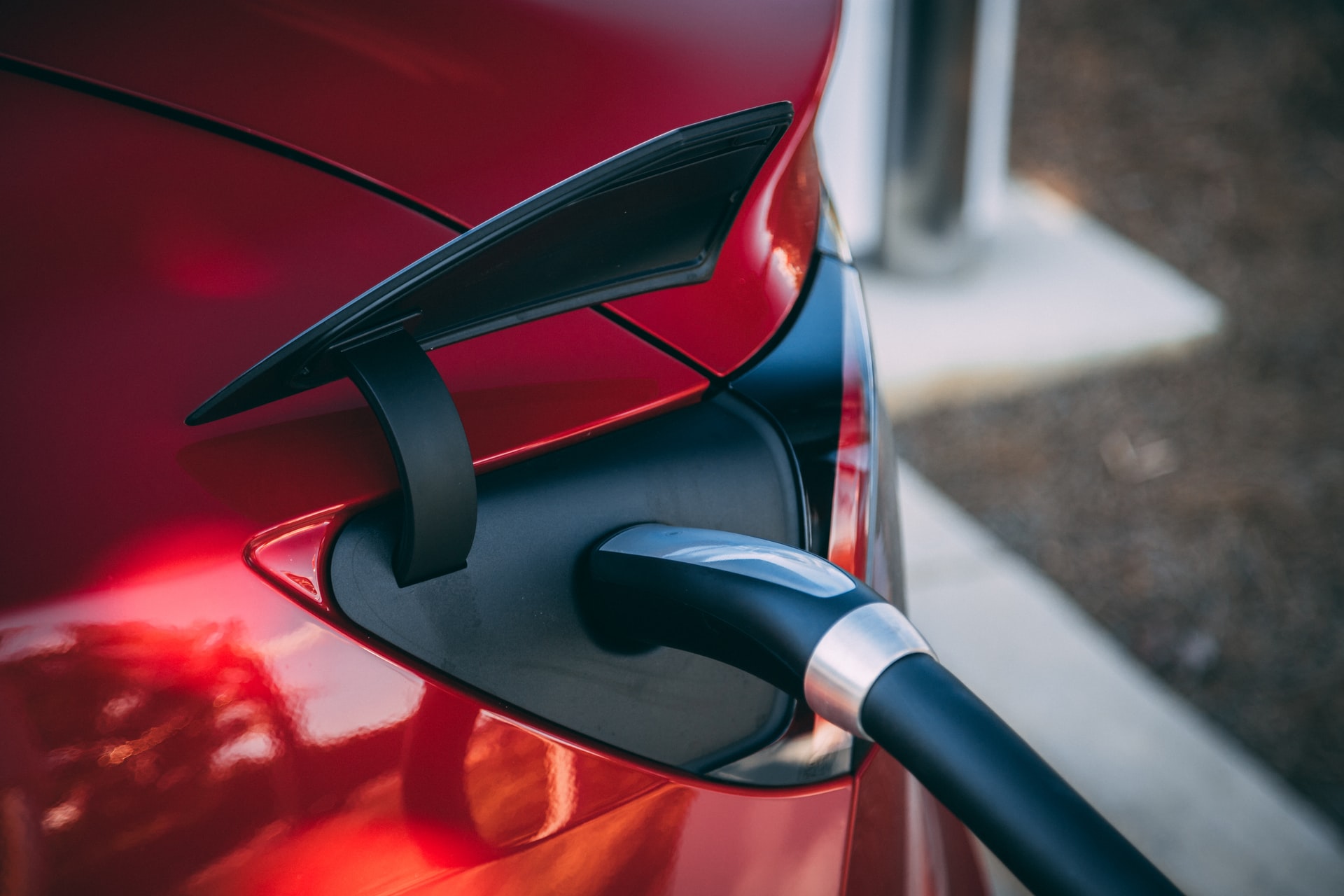
Roman Danaev
Three primary options stand out for eco-conscious drivers: plug-in hybrid cars, electric vehicles, and traditional gasoline-powered vehicles. Each of these choices impacts the environment and your wallet differently.
Should you go for an electric car that runs solely on electric power? Or does a hybrid work better as a middle ground? Will sticking with the familiar internal combustion engine is more of your thing? Don’t rush to answer before reading this!
Electric cars
An electric car uses electric motors to propel it. Unlike traditional cars, an electrified car doesn’t rely on an internal combustion engine and, as a result, doesn’t have components like fuel pumps, fuel lines, or fuel tanks. Instead, an electric car uses rechargeable batteries, typically located beneath the car’s floor, to power electric motors that drive the wheels.
Electric cars have a straightforward and reliable design with no need for a clutch or complex gear shifting. They accelerate rapidly, even faster than regular cars, because of their efficient use of power and quick torque delivery.
| Pros | Cons |
|---|---|
|
|
Hybrid cars
Hybrid cars have a versatile power system where either electric motors or fuel engines can operate independently, or they can work together for maximum efficiency. Unlike plug-in hybrids or electric cars, owners of hybrid vehicles don’t need to worry about plugging them in. They drive similarly to regular cars.
These hybrids use a high-voltage battery pack, separate from the conventional 12-volt battery, which gets recharged by capturing energy during deceleration. Also, hybrids use the fuel engine to charge and maintain the battery.
| Pros | Cons |
|---|---|
|
|
Plug-in hybrid cars
A plug-in hybrid combines a traditional internal combustion engine with an electric motor and a rechargeable battery. Plug-in hybrids tend to operate in an electric mode, which means they can run solely on electricity for a certain range. When the electric range is depleted, the car switches and functions like a regular car.
It’s called ’plug-in’ because you can charge the battery by plugging the car into an electric power source. To charge, you plug it into the mains using a special cable, usually with an external home charging unit, for convenience.
| Pros | Cons |
|---|---|
|
|
What is the difference between electric cars, hybrid cars and plug-in hybrid cars?
Now that you have a general idea about fully electric vehicles, hybrid cars, and plug-in hybrids, let's pin them against each other. What's the main difference between plug in hybrid vs hybrid vs electric cars? Also, why don't we compare them to traditional cars to get the full picture?
Functions
Cars with a petrol or diesel engine rely solely on the internal combustion engine for propulsion. As you can guess, a gasoline-powered engine means burning gasoline to generate power, with no electric motor or battery assistance.
Mild hybrids (MHEVs) feature a small 48V battery, larger than the 12V in conventional cars. They utilise an integrated starter to switch off the engine during coasting or braking and assist in acceleration. Regenerative braking replenishes the battery.
Full hybrids (HEVs) come with a larger battery and operate solely on electricity, combustion fuel, or a combination of both.
A plug-in hybrid (PHEV) is similar to full hybrids but can be charged using various methods like a three-pin plug, a wall box, or public charging stations. They use regenerative braking, too, and manual charging is also possible.
An electric car (BEV) runs exclusively on electric motor power, with recharging options similar to PHEVs.
Range and convenience of refuelling
With petrol engine cars and diesel vehicles readily available at most service stations, you can refuel quickly and easily. These cars usually have ranges of 300 miles or more on a full tank.
Mild hybrids offer the least electric-only range and primarily rely on petrol or diesel. You can refuel them at your local petrol station, which requires no additional planning.
Full hybrids, also known as self charging hybrid models, provide an electric range of around 25 miles. That's not much, but it makes them a practical choice for short trips while still running on fossil fuels when needed.
PHEVs offer an electric-only range of 20–50 miles, with some models with larger battery packs pushing it higher. This range allows for emission-free city driving if you can charge at home. Plus, for longer journeys, you can rely on the combustion engine.
Electric cars, although less convenient to refuel, have ranges exceeding 150 miles with a small battery. Many even provide up to 500 miles on a single charge. However, charging convenience largely depends on access to home charging points, workplace facilities, or public charging stations.
Tax
The tax rate for petrol and diesel cars is based on CO2 emissions and the vehicle’s list price. These models are also charged for entering certain urban areas, such as London’s congestion charge zone.
Mild hybrids and conventional hybrids, with emissions similar to ICE cars, do not receive favourable tax treatment.
On the other hand, a hybrid car is eligible for some of the lower company car tax bands due to their reduced emissions. This tax advantage makes PHEVs an attractive choice for business users.
Drivers of hybrid and plug-in hybrid cars can expect to pay £0 to £105 for the first year of road tax, depending on the vehicle's CO2 levels. Following the initial year, hybrids are charged the standard £145 per annum for road tax.
An electric car (battery electric vehicle, or BEV) will offer the biggest tax benefits. They are currently exempt from road tax, and their BiK tax bands are exceptionally low — just 2%. Also, electric vehicle owners enjoy perks like VIP access to London’’ congestion charge zone. As of October 25, 2021, only battery electric and hydrogen cars qualify for the 100% cleaner vehicles discount, which is set to last until December 25, 2025.
The gov.uk website has additional helpful information on tax rates broken down by a car's CO2 emissions and whether it uses diesel, petrol, or alternative fuels.
Environment
Conventional cars contribute directly to air pollution and greenhouse gas emissions. Diesel engines, in particular, have been associated with harmful nitrogen oxide emissions.
Mild and full hybrids can't run on electricity alone but help by reducing tailpipe emissions when idling and lessening brake wear when slowing down. Hybrids reduce the environmental impact of driving compared to regular gasoline cars, but do not eliminate it — this is a key difference between a hybrid and fully electric vehicle.
Plug-in hybrids are more eco-friendly, but this depends on how you drive them. Regularly charging a PHEV lowers emissions because it relies more on electricity.
Pure electric vehicles are the greenest option — they have “zero emissions”. Total lifetime emissions of electric cars are lower, the manufacturing process still produces some emissions. So saying they have "zero emissions" is a bit too simplistic. It's more accurate to say they have zero tailpipe emissions and lower lifetime emissions compared to gasoline vehicles.
Insurance price
Insuring an electric car or hybrid car doesn’t necessarily cost more or less. Your insurance premium is primarily influenced by your car’s make, model, and other standard factors. In other words, whether you drive an electric vehicle car or a traditional one, the risks and costs associated with your insurance are similar.
For instance, a larger electric or hybrid SUV may have a higher insurance premium compared to a smaller hatchback.
Battery life
Generally, an EV battery lasts between 8 to 15 years or more. Most EV manufacturers offer warranties that cover the battery for around 8 years or 100,000 miles.
A hybrid electric vehicle has a different battery setup. HEV batteries tend to have a longer lifespan — around 10 to 15 years or more. Some HEV owners have reported their batteries lasting beyond 200,000 miles.
Car cost comparison of hybrids vs. electric cars vs. plug-in
Mild hybrids and hybrid models are your wallet-friendly choices. These are closely aligned with the price tags of traditional petrol or diesel cars. These mild hybrids, like the Suzuki Swift, Ford Puma, and Kia Rio, don’t flaunt the flashy appearances of EVs. But they’re definitely easier to afford.
The list of used hybrid cars under 10000 you can look into on our website.
Popular hybrid models in the used market, such as the Toyota Prius and Lexus UX, are a practical bridge between traditional cars and electric or hybrid cars.
PHEVs tend to be a tad pricier than mild hybrids. One important note, though — as of now, they’re no longer eligible for UK government subsidies. However, PHEVs deliver versatility.
An electric car will typically top the price scale, and it boils down to that essential component – the battery power. The good news is that battery costs are gradually decreasing, thanks to advancing technology. For now, there are various government incentives that alleviate the higher initial purchase cost. The Government Plug-in Car Grant can slash £2,500 off the recommended retail price if the EV’s list price is under £35,000. Also, the Electric Vehicle Homecharge Scheme offers a £350 reduction in the cost of installing a charging point.
Maintenance cost comparison of hybrids vs. electric cars vs. plug-in
Petrol or diesel car: These are known for their complex engines with over 200 moving parts. Regular servicing is a must, so there will be various repair expenses over time. You’ll have to deal with tasks like engine oil changes, transmission fluid replacements, and belt renewals.
Electric car: They’re refreshingly different. With much fewer moving parts (sometimes just 17), maintaining an EV is simpler, and there’s less that can go wrong. You won’t need to worry about oil changes or complicated gear systems.
Conventional hybrid: These fall somewhere in the middle, blending both internal combustion and electric power. As a result, maintenance can be a mix of ICE and EV complexity.
With hybrid and electric, you’ll dodge some costs, but not all. There will still be general car issues like tire replacements, insurance, and addressing physical damage. What’s more, they face a potential challenge: battery degradation. During the battery warranty period, replacements are covered if the battery degrades beyond a certain point. However, after the warranty expires, replacing an electric battery can be a major expense.
Depending on EV drivers and their driving habits, the rate of battery degradation will vary. If you don’t stress the battery —no fast charging, deep discharges, or driving in extreme temperatures — you’ll be able to stretch your battery for long years.
Plug-In hybrid, hybrid or electric car: which one is for me?
When it comes to choosing between electric cars, hybrids, and conventional cars, consider your priorities. If you want an affordable, eco-friendly option that doesn’t rely heavily on charging infrastructure, go for full or mild hybrids. For emissions-free city driving without breaking the bank, plug-in hybrids offer versatility. But don’t forget to prioritise charging to reap the benefits.
However, if you’re committed to making an environmental impact and can handle the initial cost, consider going all-in with an electric car. They’re perfect for city driving and, in the long run, will save you money.
As for non-electrified models, they still have their place. Petrol and diesel cars are readily available, require less change in driving habits, and are more budget-friendly at the point of purchase.
Ready to choose your electric or hybrid car? Get a finance quote from Carplus to explore your options further!
Contents
- Electric cars
- Hybrid cars
- Plug-in hybrid cars
- What is the difference between electric cars, hybrid cars and plug-in hybrid cars?
- Car cost comparison of hybrids vs. electric cars vs. plug-in
- Maintenance cost comparison of hybrids vs. electric cars vs. plug-in
- Plug-In hybrid, hybrid or electric car: which one is for me?
Latest News
| Loan amount: | £16,000 |
|---|---|
| Length of loan: | 60 months |
| Interest rate: | 12,9% |
| Amount of interest | £5,793.84 |
| Total payment: | £21,793.84 |





